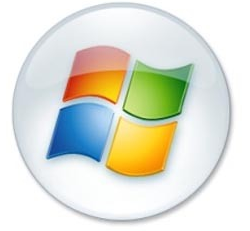 By Jeff Patterson, Ph.D.
By Jeff Patterson, Ph.D.
Managing Operations Editor
On April 18, 2011 the Supreme Court heard oral arguments in the pending patent case, Microsoft Corp. v. i4i. Ltd, an appeal from the Federal Circuit decision, i4i Lt. v. Microsoft Corp., 598 F. 3d 831 (Fed. Cir. March 10, 2010). As the defendant-appellant, Microsoft is attempting to challenge a subtle issue in current patent law. If the Court agrees with Microsoft, patent practitioners may alter their prosecution strategies significantly.
The legal issue in Microsoft’s crosshairs is the evidentiary standard required for a party seeking to invalidate a patent. A common infringement defensive maneuver is as follows: when party A is accused of infringing party B’s patent, party A will attempt to persuade a court that party B’s patent is invalid and thus unenforceable. Party A will often argue that the United States Patent and Trademark Office (USPTO) either made a mistake or did not have all the available prior art when evaluating the novelty (35 U.S.C. § 102) and obviousness (35 U.S.C. § 103) of the invention.
Federal law (35 U.S.C. § 282) mandates that a court must presume that a patent, once granted by the USPTO, is valid. Section 282 also states that a party wishing to invalidate a patent bears the burden of rebutting this presumption. The legislative intent of this statute is that courts should give deference to the USPTO as an administrative body. The statute is silent on the evidentiary standard required for a party to overcome the presumption. However, the Federal Circuit has consistently required a showing of invalidity by “clear and convincing evidence.” Microsoft is asking the Supreme Court to lower this standard, in at least some circumstances, to a “preponderance of the evidence,” often interpreted as a 51% standard. The “clear and convincing evidence” standard is greater than “preponderance of the evidence” but lower than criminal law’s “beyond a reasonable doubt.”
In 2007, Infrastructures for Information (i4i), a Canadian software consulting company, filed a patent infringement suit against Microsoft. i4i claimed that when Microsoft embedded an XML editor in their popular word processing application, Word, i4i’s patent was infringed (U.S. Patent No. 5,787,449 or the ‘449 patent). Microsoft argued that the ‘449 patent is invalid due to the on-sale bar against patentability (35 U.S.C. § 102(b)). Neither party disputes that prior to a year before i4i filed for their patent, i4i sold a software product (S4) in the US. Microsoft claims that the S4 software anticipates the ‘449 patent, triggering 35 U.S.C. § 102(b) and rendering the invention unpatentable. i4i denies that S4 practiced the ‘449 patent. Both parties agree that during the application’s examination, the USPTO did not consider S4 as prior art.
Under current patent law, Microsoft must demonstrate that S4 anticipates the ‘449 patent by “clear and convincing evidence.” However, when the development of S4 ceased, i4i destroyed the source code and no copies are available. Source code is often critical to proving infringement of a software patent. Due to this lack of evidence, Microsoft could not meet the “clear and convincing” evidentiary burden. A jury in the Eastern District of Texas awarded i4i $240 million for willful infringement. See i4i Ltd. V. Microsoft Corp., 670 F. Supp. 2d 568 (E.D. Tex. Aug. 11, 2009). Microsoft appealed the decision to the Federal Circuit, which affirmed the lower court’s finding.
Microsoft is arguing that a patent should not receive a “clear and convincing” standard of validity if the examiner did not consider material prior art. Microsoft, as well as those parties writing briefs in support of Microsoft, contend that time and resource constraints plague the USPTO, and that as a result many invalid patents are issued. A one-size fits-all presumption of validity is not appropriate given current examination process.
Most scholars speculate that the Court will make one of three decisions: a) affirm the Federal Circuit’s decision and keep the “clear and convincing” standard for all patents, b) reverse the Federal Circuit’s decision and lower the standard to “preponderance of the evidence” for all patents, or c) reverse the Federal Circuit’s decision and create a binary standard for the presumption: “clear and convincing” for patents where the USPTO considered all known prior art and “preponderance of the evidence” for other patents. Many practitioners consider option (c) as the Court’s likely outcome.
If adopted, the binary system will incentivize applicants to over-disclose to the USPTO in order to receive a stronger patent. This incentive could further overwhelm the USPTO. Many scholars argue that data overload at the USPTO often results in diminished examinations, leading to the issuance of invalid patents. The Court’s decision is expected to issue sometime in June of 2011.
Update: On June 9, the Supreme Court’s opinion issued. In a relatively brief and unanimous opinion, they found in favor of i4i. The decision can be found here.